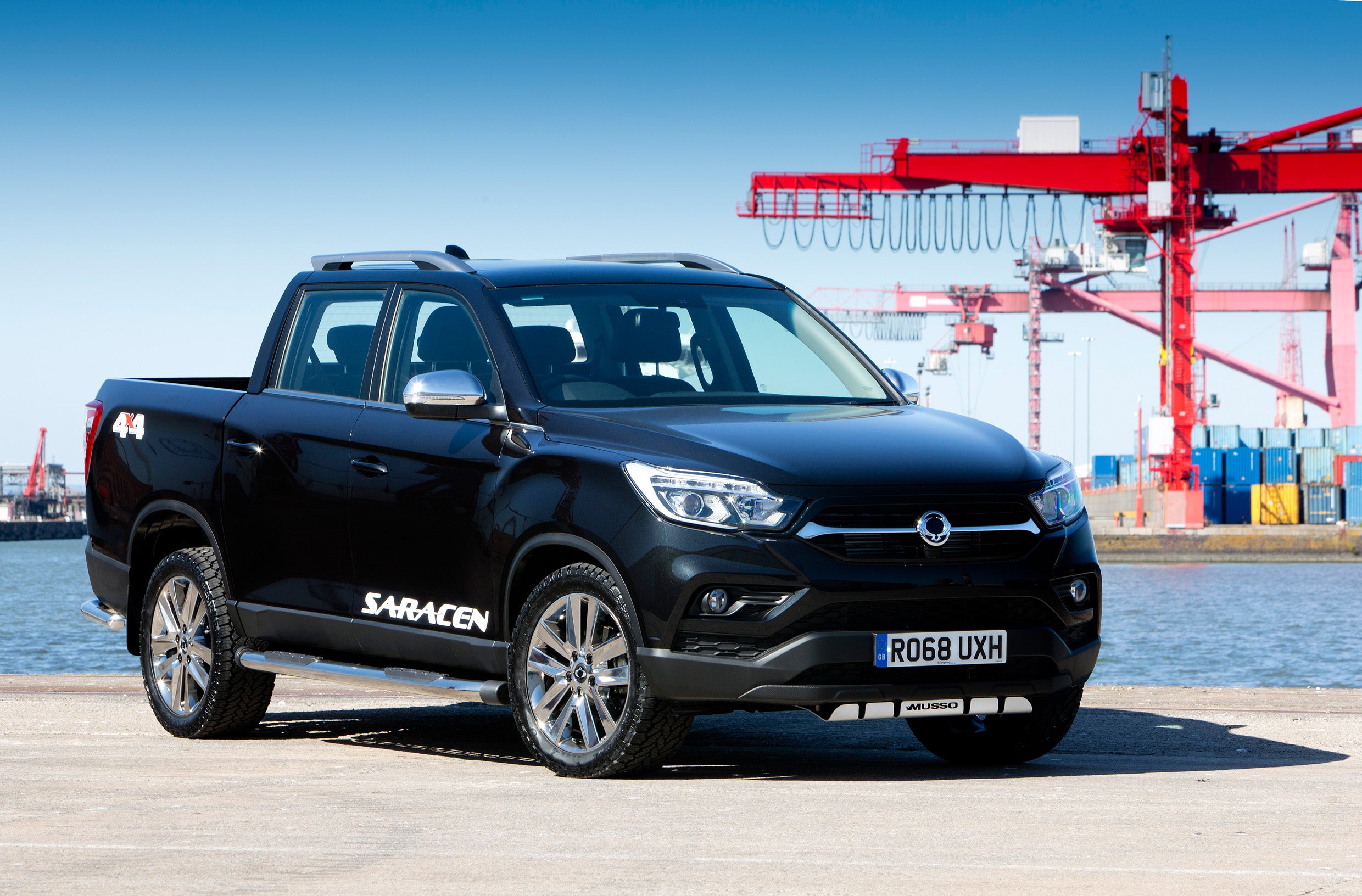Review of the SsangYong Musso, an excellent value pick-up
SsangYong means ‘double dragons’ in Korean, and refers to a legend about strength and power. The Musso has this in spades, plus an interior more like a conventional family car

“Never assume too much knowledge on the part of the reader” is the old axiom, to which the corollary should be that the reader should probably not assume too much knowledge in the writer.
Be that as it may, I should really explain what a SsangYong Musso Saracen is, for starters. It’s a pick-up. It will carry about a (literal) ton of stuff, and tow another three tons or so. So it’ll lug four tons around, should you need it to.
It’s got a gruff, not especially sophisticated diesel engine, an automatic gearbox, five seats and is rather civilised inside. You can get the most basic Musso model for £19,995 (ex VAT).
It has the potential tax advantage for business users of being classed as a commercial vehicle but with car-like qualities and seating. You can switch from rear-wheel drive to four-wheel drive, with low and high range gears. It rattles a bit.
It also has an unfamiliar name. SsangYong is a South Korean based manufacturer now owned by Mahindra & Mahindra, an Indian auto giant not yet well known in Europe (its rival Tata, of course, owns Jaguar Land Rover).
SsangYong has been making butch four-wheel drives for the South Korean army and many other customers for about 60 years. SsangYong means “double dragons” in Korean, and refers to a legend about strength and power.
The spec
SsangYong Musso Saracen
Price: £25,940 (as tested; range starts at £19,995)
Engine: 2.2-litre; 4-cylinder diesel; 6-speed auto
Power output (PS@rpm): 181@4,000
Top speed (mph): 115
0 to 60 (secs): 12.2
Fuel economy (mpg): 32.8
CO2 emissions (g/km): 22
“Musso” isn’t a playful reference to muscle power but in fact means rhinoceros in Korean (don’t say I never learn you anything). “Saracen” is a reference to warriors, sounding suitably tough for a machine such as this.
It’s not a complicated beast, this. Compared to the competition from Mitsubishi (L200), Ford (Ranger) and Toyota (hi Lux) it has a fairly squat sort of appearance, though there is plenty of room in the loading bay, which is correspondingly easier to access for heavy loads, ie a lower lip to the rear.
Plus it has that class-leading capacity for very heavy loads.
The relatively low-slung stance is no accident, for the Musso is in fact cleverly based on SsangYong’s new Rexton SUV, but with the rear quarters replaced with an open box.
The real plus side of this is the Musso’s interior, which is more like a conventional family car than a commercial vehicle. So the materials are higher quality, especially on the top-of-the range Saracen and Rhino variants, and you get creature comforts such as heated seats and a very acceptable centre console with touchscreen and built-in satnav.
You still sit quite high, and feel utterly in command of the road, though naturally, being such a large machine you need to do a little more planning when thinking about taking a route through narrow city streets or country lanes (though of course it gets onto the verge with ease).
Unlike some gargoyle-like SsangYong models in the past, it’s actually quite a good-looking car, if a touch generic, and you won’t be mocked for choosing one. The name is obscure but not an actual automotive joke – an important distinction.
In terms of durability, it is built with a body-on-frame simple construction, and boasts a 7-year/150,000-miles warranty. It’s vaguely reminiscent of the old Land-Rover Defender, with most of that famous model’s abilities but a thoroughly modern cabin.
You could think if it as a modern-day Range Rover, at least in conception (it is some distance behind the Range Rover for refinement, obviously).
Which brings me to the rattle. More of a squeak actually, from somewhere in the back of the cabin, and annoying. It’s shame because the SsangYong is a pretty good package, and would easily suit business/family users looking for some value transport.
It’s no one idea of a “driver’s car” but it was never going to be, and its rivals are in a similar league. Worth knowing about, especially if you’ve never even heard of SsangYong.
Subscribe to Independent Premium to bookmark this article
Want to bookmark your favourite articles and stories to read or reference later? Start your Independent Premium subscription today.

Join our commenting forum
Join thought-provoking conversations, follow other Independent readers and see their replies